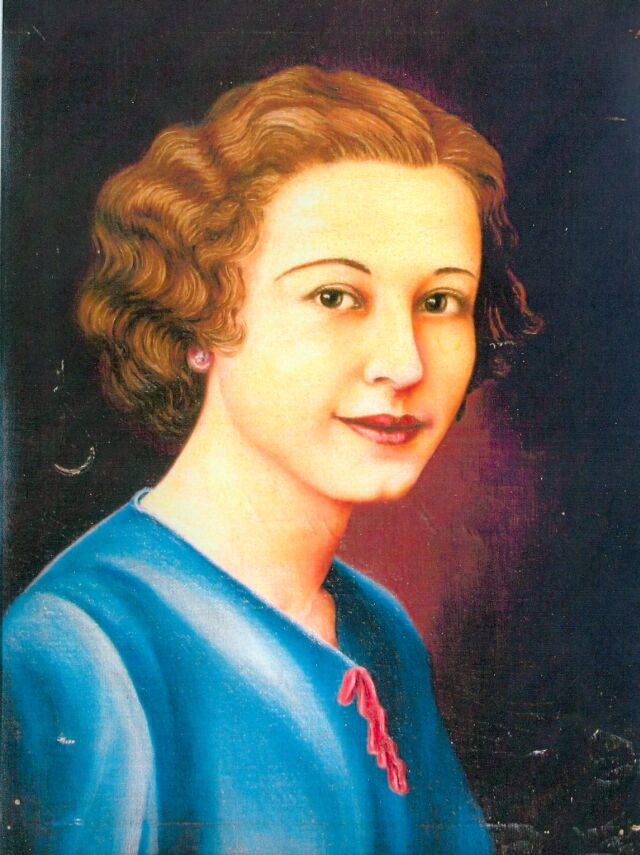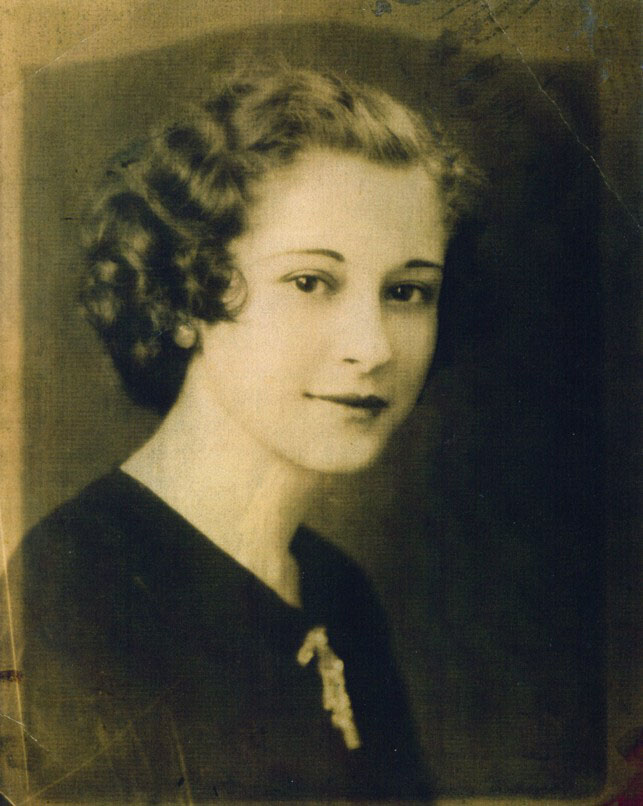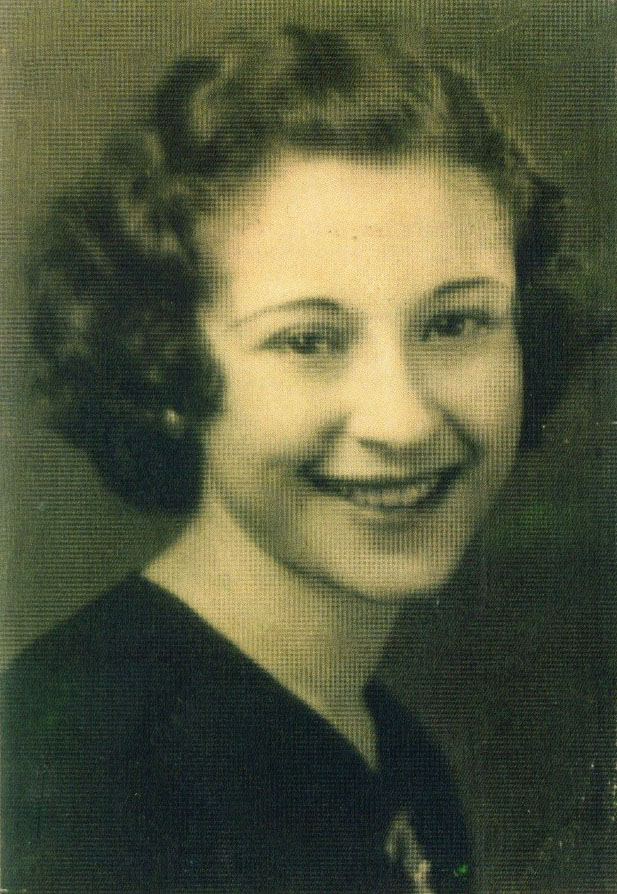The identity of the artist has always been a mystery to me. My quest is to learn his identity.
James Carlozzi emigrated to the United States from Italy in 1920 at the age of 16. He first settled in Cleveland where he had family.
Not long afterwards, the dream of making big money lured him to Detroit and a life of crime with the infamous Purple gang -- boot-legging, rum-running and murder.
The Purple gang was born around 1917.
Under the leadership of Abe Bernstein, it took control of Detroit's cleaners and dyers by pressuring and threatening employees from joining unions wishing to organize them.
XXX

XXX
|
PHILOMENA_(nee THOMAS)_MARINO
as painted by unknown Dannemora inmate artist from her high school graduation photo. The image above is displayed at 400 pica width. Click image to see the image displayed at its full 640-pica width. When the image appears, select from among your browser's image display options the one to expand its display to full width. After viewing it, use your browser's "back" button to return here.
|
|
Realizing that big profits can be made, the Purple Gang started its own protection racket by extorting "dues" from anyone operating a cleaner or laundry.
Rivalry broke out between the Purple Gang and competing rum-runners known as the Little Jewish Navy. They owned several boats with which they plied the city's waterways in carrying out various criminal activities.
The Purples hired two gunmen / brothers from St. Louis: the Licavolis -- Thomas, better known as "Yonnie," and Peter. James Carlozzi and Yonnie became friends and remained so for the rest of their lives.
Fear of the Purple Gang was on the rise. Battles escalated and the violence intensified with massacres that would stamp the gang's place in organized crime history.
One such massacre occurred in 1926 when St. Louis gangsters tried to muscle in on the Detroit gambling racket.
The out-of-towners were staying at the Milaflores Apartments. A couple of machine gunners of the Purple Gang opened fire on them, killing three.
The Purples prospered handsomely by supplying Canadian whiskey to Al Capone in Chicago. In 1931 they suspected their old rivals, the Little Jewish Navy, of hijacking booze worth well over $100,000.
The Navies were confronted at the Collingwood Apartments in Detroit where they were gunned down.
After the Collingwood massacre, three key Purple Gang members were convicted and sentenced to life in prison, bringing to an end the original organization.
XXX

XXX
|
PHILOMENA_(nee THOMAS)_MARINO
as captured by camera for one of her high school graduation photos. A copy of this photo was used for the color portrait of her painted by unknown Dannemora inmate artist. The image above is displayed at 400 pica width. Click image to see the image displayed at its full 643-pica width. When the image appears, select from among your browser's image display options the one to expand its display to full width. After viewing it, use your browser's "back" button to return here.
|
|
The Licavoli brothers, Peter and Thomas (aka Yonnie) made their move to take charge of what was left of the Purples. Their cousin James Licavoli joined them in Detroit to take over the rackets in that city. There he was convicted on bootlegging charges and sentenced to Leavenworth.
Upon his release, he rejoined his cousins in Toledo to which they had fled from Detroit to avoid heat resulting from the murder of anti-crime radio crusader Jerry Buckley.
In Toledo, they muscled their way into the bootlegging business but that didn't last long. During their struggle for control, beer baron Jackie Kennedy was killed.
Yonnie and four of his gang's members were arrested for murder. At the time, James Carlozzi had been a member Yonnie's gang. Sentenced to life in prison, Licavoli was paroled in 1972 after 37 years in prison and died of cancer the next year.
Meanwhile Pete had eventually returned to Detroit to try reorganizing the Purple Gang. James fled to Pittsburgh.
I am unsure precisely what crime resulted in my grand uncle James Carlozzi being sent to Clinton Penitentiary in Dannemora. Family lore has him serving as the "wheelman" in some criminal venture that went bad.
He was sentenced to 20 years but got out after 10, possibly on a successful appeal of some sort (perhaps over the level of the charge involved). He was released in 1944 at age 40.
James Carlozzi returned to Cleveland where he married and settled into the restaurant business (Italian-American menu). His first was named the CIC Club. A later one was called the Sorrento Restaurant.
XXX

XXX
|
PHILOMENA_(nee THOMAS)_MARINO
as captured by camera for one of her high school graduation photos, not the one used for the color portrait of her painted by unknown Dannemora inmate artist. The image above is displayed at 400 pica width. Click image to see the image displayed at its full 629-pica width. When the image appears, select from among your browser's image display options the one to expand its display to full width. After viewing it, use your browser's "back" button to return here.
|
|
Grand uncle Carlozzi died in 1968 at the age of 64.
Four decades later I wish that either of my two brothers, or my sister or I had worked up nerve to ask our grand uncle about what crime had put him behind bars and what inmate had painted our mom's portrait.
Of course, we knew he had been "inside."
My uncle told us how he would accompany his mother, my grandmother, when she would visit her brother, my grand uncle Carlozzi, in a prison.
When "Uncle Jimmy" was released and returned to Cleveland, which was where our family also lived, we would see him at family gatherings, the holidays or special occasions.
I even worked one summer in one of his restaurants.
Yet, his criminal past and his prison years were never subjects we raised in discussions with him. Today, when everything is hung out for everyone else to see and talk about, such reticence may seem strange.
But back then, hard working folks like ours -- both our parents worked at full-time jobs; dad as a machinist and later as a machine shop owner, mom, as a meter calibrator -- just didn't make light conversation about such weighty matters.
Two years after Philonenia Thomas graduated high school, occasioning the photo used by the prisoner in painting her portrait, she married Anthony Marino, then a machinist. While skilled with machinery, my father also had a love for horses, and owned a few after his own machine shop provided the means to invest in them.
That equestrian passion he passed on to me. Until my retirement, I operated riding stables.
My mother's portrait occupies a place of prominence in my home. From time to time, when I pause to look at it anew, I wonder who was the gifted inmate who painted it, what had happened for him to have been imprisoned, was he ever released and did he ever frame a decent life for himself and his talent?
Anyone reading this and having a clue that might advance my search for answers to those questions, can email that information to me via nychs2@nyc.rr.com